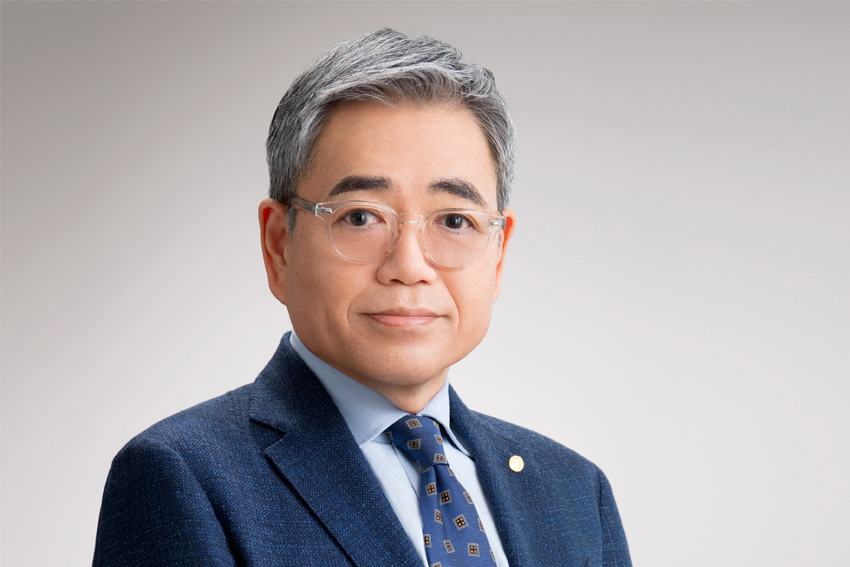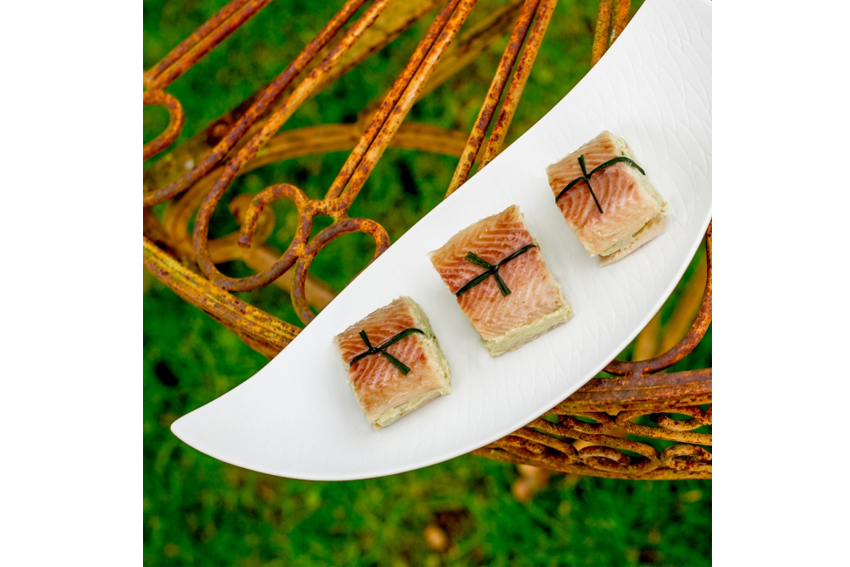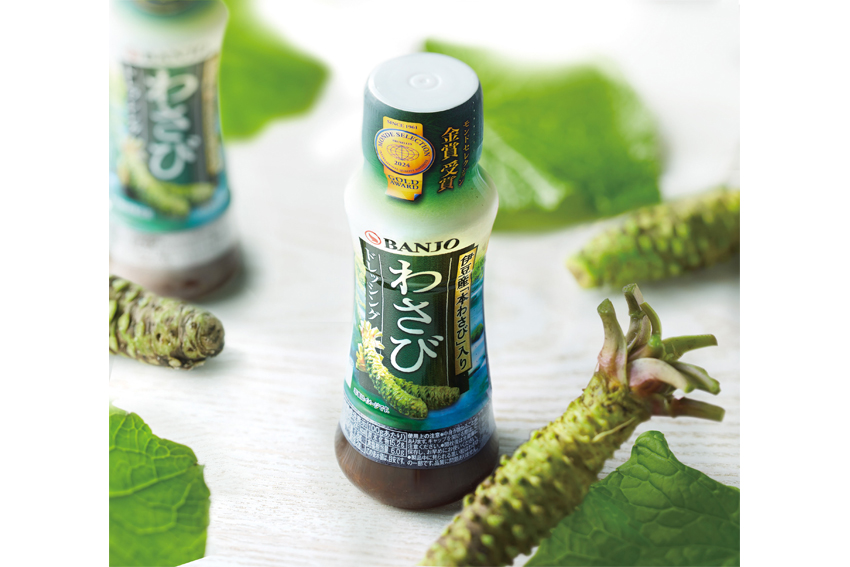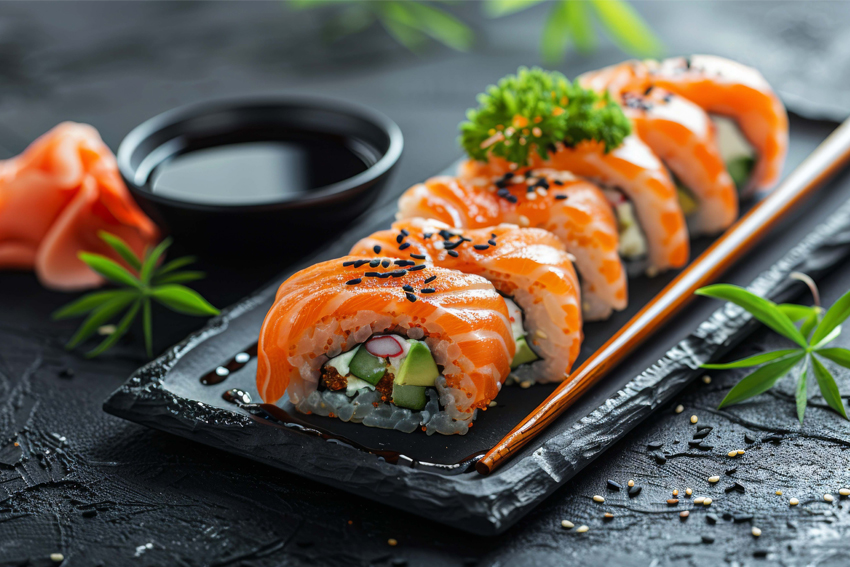As demand for Japanese cuisine increases, Banjo Foods pursues impressive growth targets by crafting premium wasabi products and making wasabi accessible to international consumers.

For 11 consecutive years, Japan’s food-related exports have been on the rise, reaching JPY 1.45 trillion in 2023. A key driver of this growth has been the global expansion of Japanese restaurants, which have tripled in number over the past decade. From a trading company’s perspective, what factors do you believe have contributed to this substantial increase in Japanese food exports? And why is now the right time for washoku to gain greater international recognition?
The history of washoku’s expansion overseas dates back to the 1970s, a period of significant economic growth for Japan. At the time, Japan was experiencing a rapid rise in global economic influence, often described with the phrase “Japan as number one.” During this era, a large number of Japanese expatriates moved abroad, and the initial focus of Japanese cuisine overseas was to cater to these expat communities. As Japanese food became more prevalent, interest in Japan’s broader culture—including its cuisine—began to grow.
The first wave of washoku’s international popularity was driven by economic factors, but the second wave was more culturally driven, fueled by the global rise of anime and manga. This cultural expansion brought dishes like ramen and tonkatsu into the spotlight, leading to a worldwide proliferation of Japanese restaurants. However, the quality of these establishments varied, with many not offering authentic Japanese cuisine. Some of these restaurants fall into what we call “mock-washoku,” lacking the true essence of traditional Japanese cooking. As a company committed to genuine Japanese cuisine, our goal is to promote authentic washoku globally and deepen people’s understanding of it.
The surge in tourism to Japan last year has further accelerated this trend. More international visitors are experiencing authentic washoku firsthand, taking those experiences back home and driving demand for genuine Japanese cuisine abroad. This is, of course, highly favorable for companies like ours.
Looking ahead, I believe the next wave of washoku’s global expansion will involve non-Japanese families embracing it as part of their regular dining traditions. To support this shift, we are working to make Japanese ingredients more accessible and easier to use. If this vision is realized, it will further elevate washoku’s presence on the global stage and bring it even greater recognition and appreciation.
Internationally, there is a growing demand for healthier alternatives to many Western staples, creating a significant gap in the market. As sushi culture continues to expand worldwide, how do you see the role of wasabi evolving in these international markets?
First, let’s look at the domestic market. Wasabi agricultural output in Japan has been declining, according to data from the Ministry of Agriculture, Forestry and Fisheries (MAFF). However, we approach this data with some skepticism, as the year-to-year fluctuations seem quite large, making us question whether such dramatic shifts are actually possible.
In the case of tubed wasabi, we’ve seen an increase in domestic sales post-COVID, particularly in the premium category. However, younger generations in Japan are showing a decreasing preference for wasabi, which suggests that overall domestic demand is likely to decline over time.
Now, regarding the role of wasabi overseas—exports have been growing, but Japan’s currency depreciation has had a major impact. In the competition between Japanese and international buyers, overseas demand is now dominating, with international buyers securing the larger share.
Real wasabi is primarily used in premium restaurants, where it often plays a role in culinary presentation. At high-end sushi establishments, chefs sometimes turn the preparation of fresh wasabi into a performance. Fresh wasabi has a delicate, nuanced flavor with different varieties offering unique characteristics. However, one key aspect of real wasabi is that its spiciness is short-lived—once grated, the heat dissipates almost instantly, which is considered a positive trait.
On the other hand, processed wasabi offers more versatility. We can adjust its spiciness, fragrance, and even color to better suit different applications and target specific consumer preferences. For example, when paired with fatty tuna, the high fat content can diminish the perception of spiciness, meaning a stronger wasabi would enhance the dining experience. Conversely, using that same level of spiciness on leaner cuts of tuna could be overpowering. By tailoring processed wasabi to complement specific dishes, we can enhance the overall balance and enjoyment of the cuisine.
We actively develop wasabi for the domestic market, working closely with major customers. For example, we manufacture wasabi for a leading retailer with over 110 stores nationwide. Companies like this often request custom-developed wasabi tailored to their specific needs, and this approach isn’t limited to just one client—many of our customers require a highly customized product. Before finalizing a wasabi formulation, we typically go through at least ten iterations to fine-tune the balance of flavor, color, texture, and spiciness to meet their exact requirements. Our service extends beyond just the product itself—we also handle packaging to ensure a seamless experience for our customers.
Bringing this back to your question, processed wasabi plays a crucial role in overseas markets as well, helping to enhance the global enjoyment of Japanese cuisine.

For example, in French cuisine, chefs tend to prefer processed wasabi over fresh wasabi. The reason is simple—by the time a dish reaches the diner, the spiciness of real wasabi would have already dissipated. Processed wasabi, on the other hand, retains its heat and aroma, ensuring a more consistent flavor experience. We’ve heard countless stories of chefs using our premium-grade wasabi in high-profile settings, including in dishes prepared for reception hosted by President Emmanuel Macron.

Banjo Foods Wasabi Dressing has been awarded the Gold Quality Award from Monde Selection Quality Institute an impressive 14 times—a testament to its exceptional quality and craftsmanship. What sets this dressing apart, and why do consumers around the world continue to choose it?
Wasabi dressing can be crafted in many different ways, and while most people associate wasabi primarily with spiciness, there’s much more to its appeal. When developing our dressing, our goal is to create a product that consumers will want to use repeatedly—something they’ll keep coming back to.
The key lies in striking the perfect balance between umami and spiciness. Too much heat can be overwhelming, while too little may not capture the essence of wasabi. We believe that our dressing achieves this ideal harmony, making it not just distinctive but also highly versatile and enjoyable for a wide range of consumers. This carefully refined balance is what truly sets our product apart.

Two key products we identified in our research are your Grated Wasabi and Umashio Dressing. Among your product segments, which do you believe holds the greatest potential for international market growth?
I believe the potential for market growth really depends on the country. In Japan, consumers are accustomed to pairing salads with dressings, whereas in many other countries, salads are often served simply with olive oil, making salad dressings less popular. While I do see significant potential for dressings in international markets, wasabi remains at the core of everything we do.
When considering overseas expansion, we are also looking at the industrial use of wasabi, particularly supplying it to restaurant chains. If we aim to grow in this segment, we need to expand our stock-keeping units (SKUs) to offer different types of wasabi tailored to various applications. The key is to first understand how different channels are utilizing wasabi and then align our product offerings accordingly. By doing so, we can maximize its adoption in international markets.
Banjo mots 10 outlines your company’s 10-year vision, emphasizing the attraction of top talent and the creation of a dynamic, innovative work environment that balances tradition with forward-thinking growth. When it comes to overseas expansion, what key growth areas is Banjo Foods prioritizing?
In April 2024, we established our long-term vision, Banjo mots 10, and began a structural reformation to strengthen our organization. As part of this transformation, we split the company into two divisions, one of which is Banjo Seasoning Partners Inc.,(BSP) responsible for managing domestic sales channels for fresh fish. This restructuring was designed to reinforce the foundation of our group and enhance overall growth.
Our fresh food business has been performing well, and we aim to further strengthen it by increasing revenue by 50% over the next three years. A key contributor to this growth is our convenience store segment, which falls under BSP. B to B to C categories such as CVS as well as home meal delivery type of customers are expanding their offerings with more meal kits, helping drive us toward our revenue goals.
Beyond fresh food, we are focusing on additional growth fields, including Private Brand and Original Equipment Manufacturing (PB/OEM), international markets, and food chain expansion.
For our international strategy, we have set a goal of achieving a 5% revenue contribution from overseas markets, though we strongly believe we can push beyond that to 10% and beyond. One approach to accelerating this growth is partnering with major domestic clients that also operate internationally, leveraging existing relationships to expand our reach.
A great example of this is our collaboration with a Norwegian company specializing in salmon-based sushi. We supply them with our wasabi, and their products are already being exported to Spain and France through established distribution channels. This type of strategic partnership exemplifies how we can scale our international presence while maintaining our commitment to high-quality Japanese food products.

Throughout many of our interviews, the theme of finding local partners and collaborators has emerged as a key factor in international expansion. How important is building local partnerships to increasing your international revenue and achieving your overseas growth goals? Are you currently seeking new partners in international markets, and if so, which countries are you focusing on?
I strongly believe that establishing local partnerships is essential for international growth, but there are multiple approaches to doing so. One key factor is ensuring that Japanese food culture is well understood—without effectively communicating what makes Japanese cuisine truly authentic, its value may not be fully appreciated. In this regard, one approach is to partner with Japanese companies that share this commitment to authenticity.
In a sense, wasabi can be considered “killer content”—a crucial component without which Japanese cuisine doesn’t quite work. Another strategic approach is to collaborate with companies that offer complementary SKUs, allowing us to combine our products with theirs and expand overseas together. Additionally, we are open to partnering with wholesalers, but for this to be successful, we need a product that truly stands out, as competition in this space is intense.
As for target markets, China is already experiencing growth, but we must carefully consider the geopolitical risks and distribution challenges associated with the region. Beyond China, we are also exploring opportunities in North America, India, and the Middle East, as these regions present strong potential for Japanese food expansion.
Imagine that we return in four years for another interview. What goals or milestones do you hope Banjo Foods will have achieved by then? What are your aspirations for the company’s growth and international expansion over the next four years?
As a company, our focus is on maintaining a human-centric mindset—we want to see each individual grow alongside the company over the next four years. Executing our vision will be the key to sustaining this progress, and as an outside hire, I deeply want to see growth for all involved, both personally and professionally.
From a business perspective, we are currently at JPY 6 billion in revenue, and our goal is to reach JPY 10 billion. To achieve this, continued growth and expansion are absolutely essential. Over the next four years, we aim to strengthen our market presence, expand internationally, and solidify our position as a leader in authentic Japanese food products.
For more information, please visit their website at: https://www.banjo.co.jp/en/
0 COMMENTS